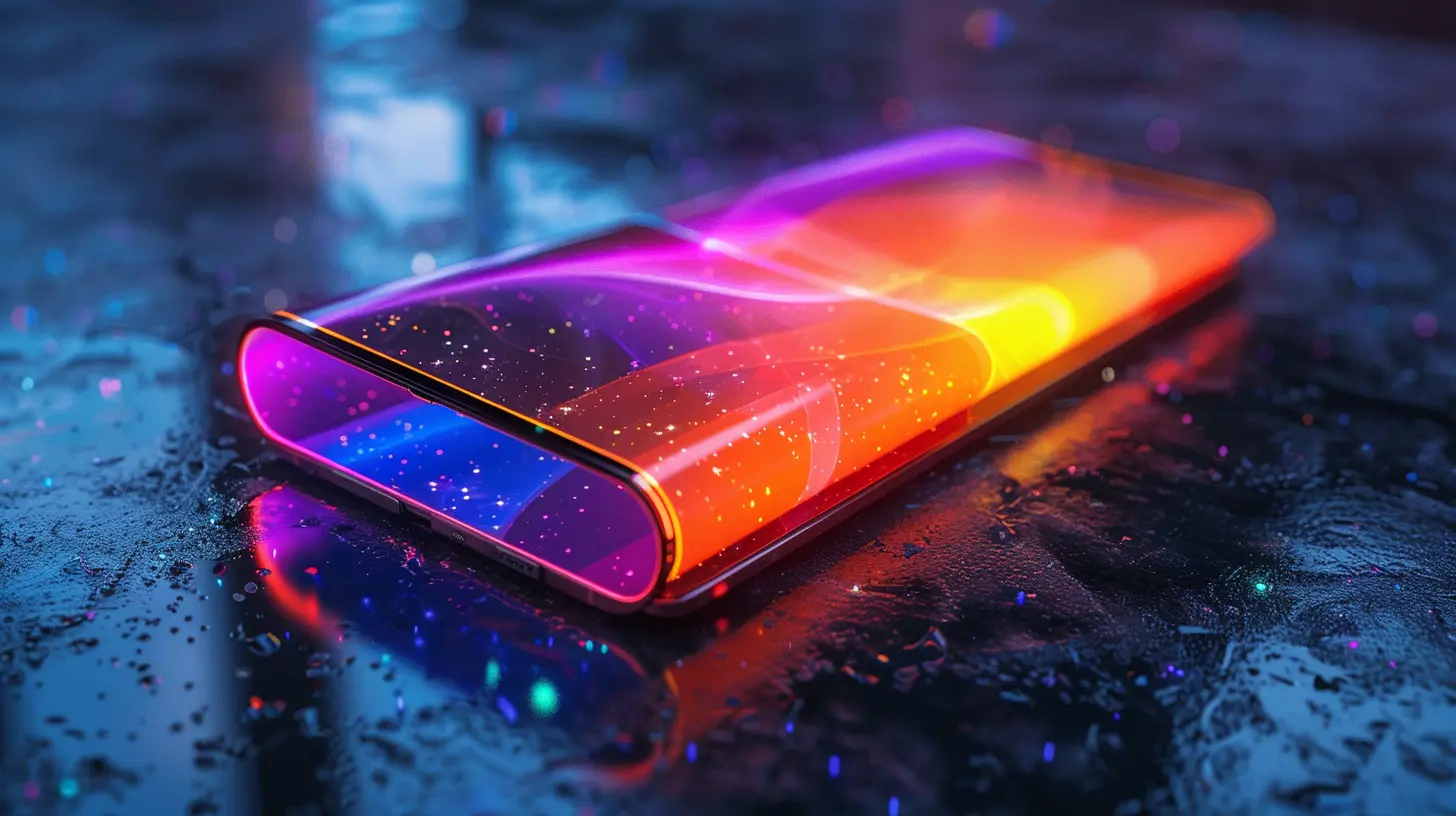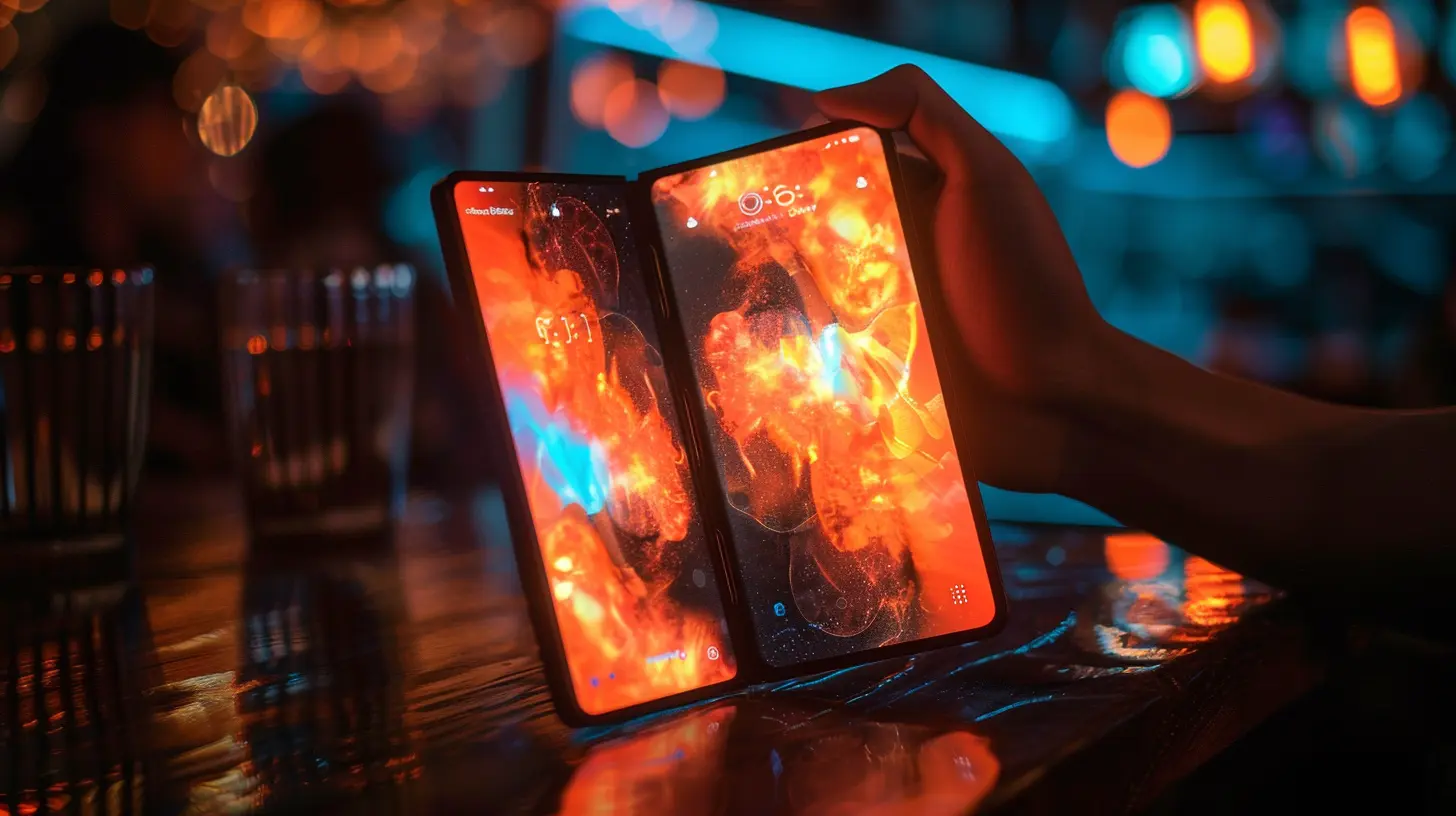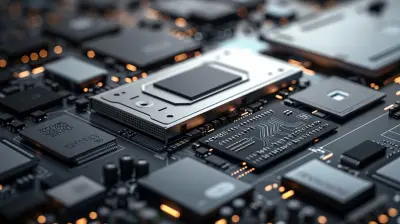The Future of Foldable Smartphones: What to Expect
6 August 2025
It wasn’t long ago when the very idea of folding a smartphone seemed like something straight out of a sci-fi movie. A device that could bend without breaking? Yeah, right. Fast-forward to today, and we’ve got phones that fold, flip, and flex like they’re doing yoga. From the Samsung Galaxy Z Fold to the Huawei Mate X series, foldables are no longer futuristic fantasies — they’re very real, and they're getting better by the day.
But where exactly are we headed with foldable smartphones? Is this just a passing trend or are we standing on the edge of a tectonic shift in mobile technology? Let’s unravel (pun intended) the future of foldable smartphones and what it holds for all of us.
A Quick Glimpse Back: How Foldables Took Off
Before we look ahead, let’s take a step back.Remember when the first foldable phones hit the shelves? That was around 2019. Early adopters were curious, but honestly, most folks were skeptical. And rightly so. The first-gen devices were bulky, pricey, and had a few durability hiccups — creases, cracking screens, and hinge issues.
But tech evolves fast.
Fast-forward to now, and we’re looking at third, fourth, even fifth iterations of some foldables. They’re slimmer, stronger, smarter, and far more polished than their early versions. So if history tells us anything, it’s that the future of foldables is only going to get brighter — and bolder.
Foldables Will Get Thinner, Lighter, and Tougher
One of the biggest complaints about foldable phones? They're chunky. I mean, slipping one into your jeans pocket often feels like squeezing a brick into a coin pouch.But here’s the good news: manufacturers are relentlessly working on making these devices thinner and lighter. Thanks to advancements in materials science, especially innovations with ultra-thin glass and hinge mechanisms, the next generation of foldables will feel less like a brick and more like, well, a regular phone.
And toughness? Oh, that’s improving too. Companies are investing heavily in making foldables more durable — think water resistance, dust resistance, and drop protection (without wrapping them in a tank-like case).
Better Software Experience: A Game-Changer
Hardware is only half of the story. What really makes or breaks the foldable experience is software.Initially, the software on foldables felt awkward. Apps weren’t optimized, multitasking was clunky, and the whole experience was a bit… weird.
But developers and phone makers are finally getting the hang of it. We’re now seeing apps that adapt seamlessly when unfolded, improved multitasking interfaces, and even software that takes full advantage of the large screen real estate. Think drag-and-drop between apps, multi-window setups, and tablet-like productivity — all in your pocket.
Apps are getting smarter, too. Expect better AI-driven layout adjustments, gesture controls, and split-screen features that actually feel intuitive.
More Affordable Options are on the Way
Let’s talk about the elephant in the room: foldable phones are expensive.$1,500 or more for a phone? That’s not pocket change. But just like with any tech, prices drop as production scales up and components become cheaper. Remember when flat-screen TVs used to cost a fortune?
We’re already starting to see more mid-range foldable options, like the Samsung Galaxy Z Flip Lite (rumored) and some lower-cost models from Chinese brands. And this trend will definitely continue.
In the near future, foldables won’t just be for tech geeks or luxury buyers — they’ll be accessible to regular folks who just want a cool, versatile phone that doesn’t break the bank.
Foldables Will Blur the Line Between Phones and Tablets
This is where it gets exciting.The biggest advantage of foldables? Versatility. You’re essentially carrying two devices in one — a compact smartphone and a mini tablet. That’s huge for power users, multitaskers, and content consumers.
And as the technology matures, foldables will likely become the standard for people who want both portability and productivity. Imagine editing a document on a full-screen while on the go, or watching a movie on a big display without needing a tablet or laptop.
Foldables are redefining what it means to be mobile. They’re making the “phablet” cool again — and this time, it’s not just a gimmick.
New Form Factors Will Shake Things Up
So far, we’ve mainly seen two types of foldables – book-style (like the Z Fold) and clamshell flip-style (like the Z Flip). But the future? It’s going to be way more creative.We’re talking:
- Rollable displays that expand horizontally
- Tri-fold devices that give you even MORE screen space
- Slide-out displays that can stretch on demand
And who knows? We might even see wearable foldables, like smartphones that wrap around your wrist. Sounds crazy? Maybe. But if the past decade of tech has taught us anything, it’s that today’s “crazy” is tomorrow’s “standard.”
Battery Life: Still an Uphill Battle (But Getting Better)
Let’s be real — having a giant foldable screen is awesome, but it also means more power consumption.Battery life has been one of the pain points for foldables. Packing a big enough battery into a device that bends is, well, an engineering nightmare.
But improvements are underway. More efficient chipsets, better software optimization, and even dual-battery setups are helping.
In the future, we can expect foldables to rival — if not surpass — the battery life of traditional smartphones. And once that happens? The floodgates will open.
Cameras Will Catch Up (And Shine)
Another area where foldable phones are playing catch-up is camera performance.Because of their unique design and internal space constraints, foldables haven’t always sported the best camera setups. But that’s changing fast.
With newer foldables starting to feature flagship-level lenses, powerful AI image processing, and clever folding tricks to enable better selfies, the gap is closing.
Expect foldables to soon rival — or even outdo — traditional smartphones in camera prowess. Just imagine using your main camera for selfies — thanks to that flexible screen. Now that’s a game-changer.
The Impact on Productivity and Everyday Life
Let’s zoom out for a second.Foldables aren’t just about shiny toys for tech nerds. They have real-world applications that could change how we live and work.
Think about students who can take notes while watching a lecture, creators who can edit videos on the go, or professionals who can manage documents without lugging around a laptop.
Foldables offer a compact, all-in-one solution for the "work from anywhere" lifestyle. And as remote work continues to grow, these devices will become even more relevant.
Foldables and Gaming? A Match Made in Heaven
Mobile gaming is booming, and foldables are stepping in to make the experience even better.Bigger screens, immersive visuals, and better multitasking (like chatting while playing) make these devices ideal for gamers. Add in high refresh rates and powerful GPUs, and you’ve got a portable gaming console that fits in your pocket.
With cloud gaming on the rise, foldables might just become the go-to platform for gamers on the move.
What About Apple?
You’re probably wondering… where’s Apple in all of this?As of now, Apple hasn’t released a foldable iPhone. But that doesn’t mean it won’t.
Rumors suggest that Apple is quietly testing prototypes and wants to get the foldable formula just right before launching anything. And knowing Apple, they’ll wait until they can deliver something truly polished.
So, while the Android world is leading the way in foldables right now, don’t count Apple out. When they do jump in, things are going to get real interesting.
The Road Ahead: Challenges Remain
Let’s not paint a perfect picture. Foldables still have some hurdles to overcome:- Durability concerns
- Higher prices
- App compatibility issues
- Battery constraints
But these are today’s problems. Give it five years, and most of these will be sorted out — just like how early smartphones struggled before becoming indispensable.
Final Thoughts: The Foldable Future Looks Bright
So, what can we expect from the future of foldable smartphones?In a word? Evolution.
We’re going to see slimmer designs, better software, smarter cameras, and prices that won’t make your wallet cry. Foldables are moving from novelty to necessity — fast.
Sure, we’re not all carrying foldable phones just yet. But that could change very soon. The next big thing in smartphones isn’t a better camera, or faster chip — it’s a whole new way of interacting with your device. One that folds to fit your life perfectly.
Whether you’re a multitasker, a creative, a gamer, or just someone who loves cool stuff — foldables might just be your next obsession.
And honestly? We’re here for it.
all images in this post were generated using AI tools
Category:
Mobile TechnologyAuthor:

Ugo Coleman
Discussion
rate this article
1 comments
Calyx McLaurin
Foldable smartphones will redefine mobile technology's landscape.
August 10, 2025 at 11:11 AM

Ugo Coleman
Absolutely! Foldable smartphones offer innovative flexibility and new user experiences, paving the way for exciting advancements in mobile technology.


